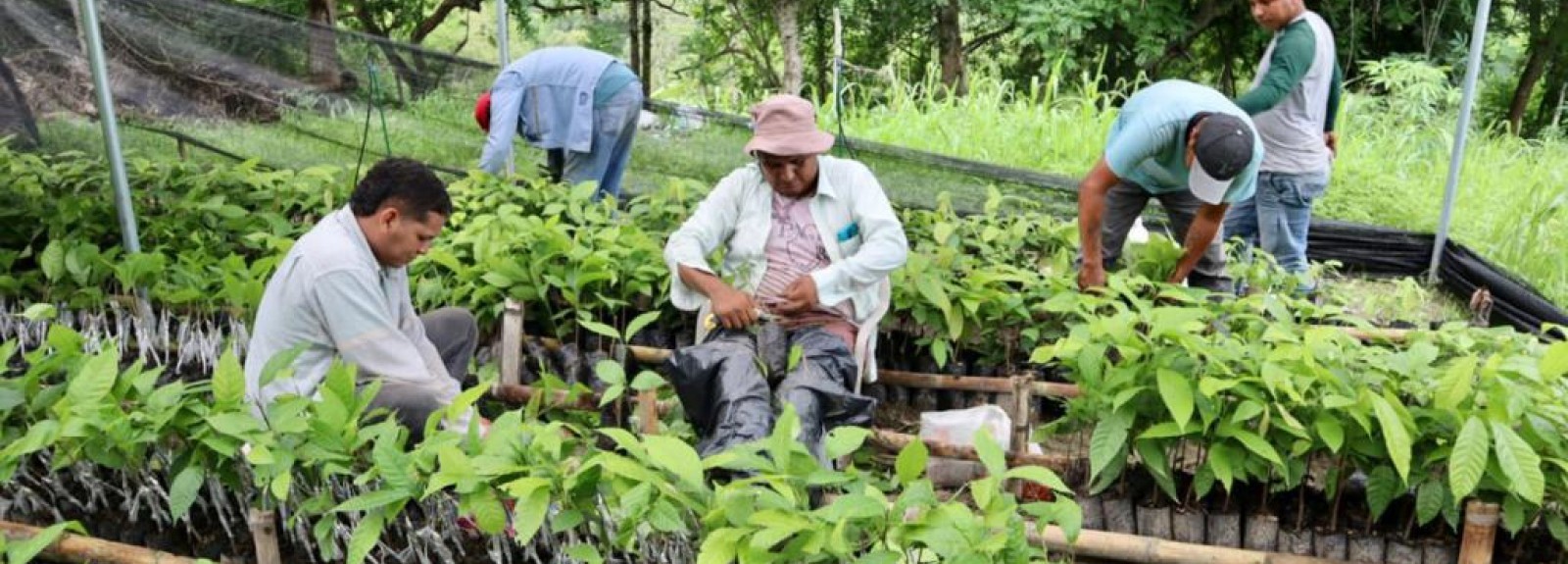The Maximizing Opportunities in Coffee and Cacao in the Americas (MOCCA) project is a seven-year initiative, funded by the U.S. Department of Agriculture’s Food for Progress Program with Technoserve as consortium lead, aimed at helping more than 100,000 farmers overcome the barriers limiting their capacity to effectively rehabilitate and renovate their coffee and cacao plants in Guatemala, El Salvador, Honduras, Nicaragua, Ecuador and Peru. Lutheran World Relief leads cocoa programming for the MOCCA project, implementing a comprehensive approach to promoting cocoa production that focuses on increasing crop yields through agroforestry systems, improving cocoa quality, enhancing the professional capacity of both farmers and producer organizations, and facilitating linkages between cocoa buyers and sellers.
Lutheran World Relief collaborates with trade associations, producer organizations, exporters and research institutions through MOCCA. To foster resilient farms and robust market systems throughout the region, MOCCA has two main objectives: 1) increase cacao production and quality while supporting farmers in renovation and rehabilitation (R&R), and 2) expand agricultural trade and boost sales volume.
Partnership in Ecuador
Through MOCCA in Ecuador, Lutheran World Relief and ofi Ecuador have partnered since 2021 to advance sustainable cocoa production. This collaboration has supported 650 Ecuadorian cocoa producers who are based in Ecuador’s coastal region with technical assistance and business management.
An innovative approach that has been advanced in Ecuador is the establishment of community plant nurseries. These nurseries are not only built with concrete bases and metal support so that they will last long into the future, but they employ fertigation systems which facilitate the application of fertilizer solutions with irrigation water. With zero synthetic chemical inputs used on crops to date, the nurseries emphasize organic production. Receiving technical advice from the sustainability team at ofi Ecuador, the nurseries are completely managed by small cocoa farmers who produce the rare Ecuadorian cacao variety called Nacional.
Fostering cocoa productivity in the community of San Isidro
In August 2022, the community of San Isidro located in Manabi, Ecuador received financing from MOCCA through ofi Ecuador. With the funds, the community came together to develop a community nursery where they began growing cacao plants to strengthen Nacional variety cacao production.
A group of 30 San Isidro cocoa farmers, consisting of 10 women and 20 men ranging in age from 30 to 60, have been diligently working to cultivate 11,000 cacao plants of the esteemed Nacional variety. They successfully completed two cycles of seedling production per year with an initial cocoa variety pattern, each yielding the same quantity. Then, they incorporated grafting techniques to improve the quality of the cocoa, resulting in an impressive 92 percent success rate. These thriving plants have now been distributed to fellow cocoa farmers who actively participate in sustainability programs, with the shared vision of achieving a remarkable increase in dry cocoa production of 22 tons by 2026.
By getting involved with the nursery, I found a training space. After having exchanged experiences and knowledge, I feel able to put them into practice and improve the management of my cocoa. It motivates me to see my neighbors committed to a long-term project that will improve our lives and income.
Kerliy Quiroz
This initiative will be complemented by the establishment of a clonal garden next to the nursery, ensuring the origin and quality of the buds will be used in the next phases of plant production.
Sustainable cocoa livelihoods
Through the concerted efforts of Lutheran World Relief and ofi Ecuador through MOCCA, the community nursery is actively contributing to the preservation of the Nacional cacao variety while simultaneously uplifting the livelihoods and well-being of cocoa farming communities. Not only are there more opportunities for increased income, but the social fabric of communities is being strengthened around cocoa or, as it is known in Ecuador, the “pepa de oro" (golden bean).
___________


